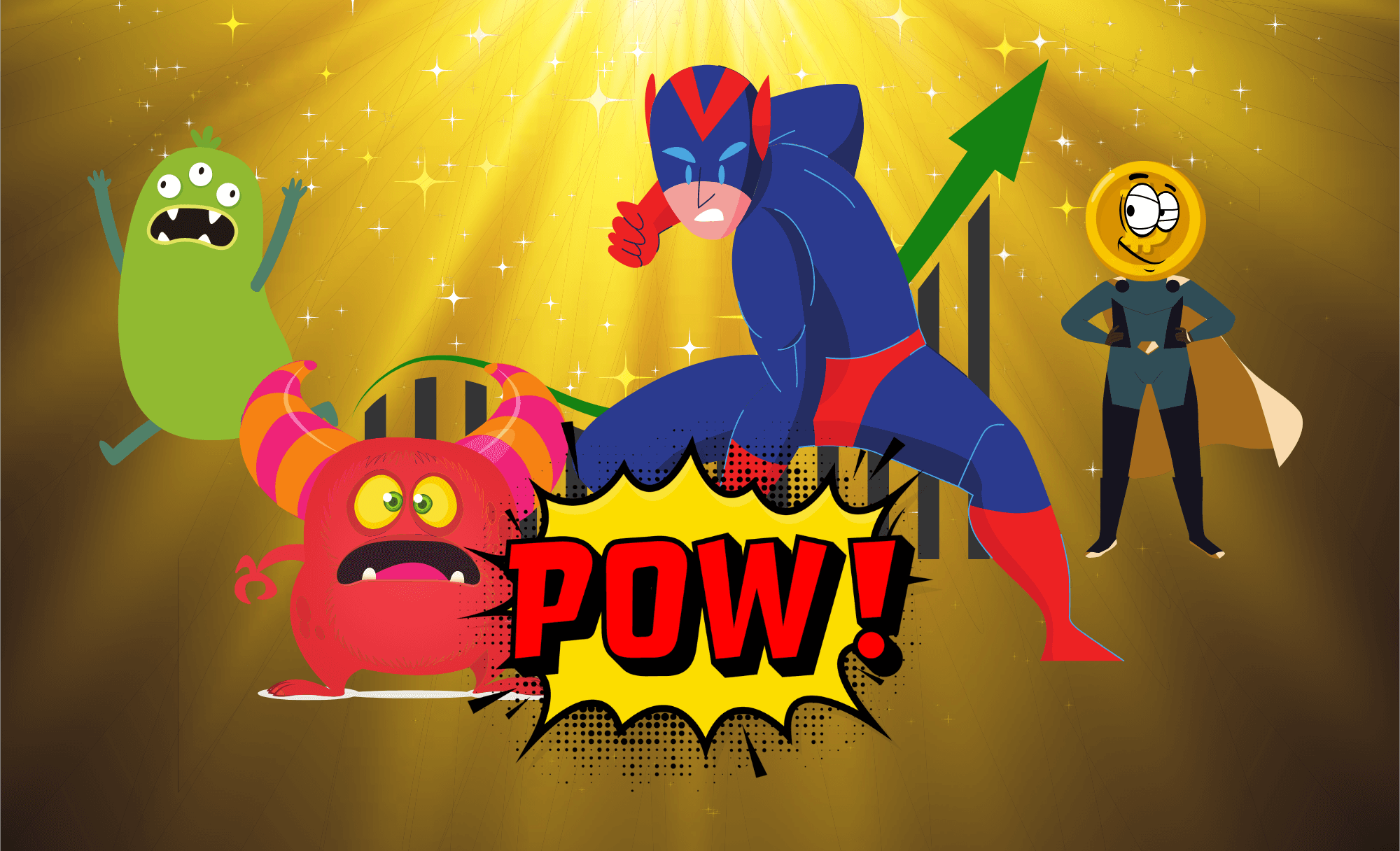Learn about the different factors that cause fear, uncertainty, and doubt in cryptocurrency markets - and how you can keep your investments safe!
If you've been in the crypto scene long enough, you've probably heard the word "FUD" get thrown around quite a bit. The use of this expression hovers somewhere between scorn and disbelief in response to media coverage, people, and events that are causing negative sentiment in the crypto market.
FUD stands for fear, uncertainty, and doubt - and is usually followed by a brief to prolonged downtrend in the market as individuals start panic selling. There are many factors that can induce FUD in even the most seasoned investors, and we'll talk more about these below!
What are some of the causes of FUD?
Legislative action is perhaps the biggest contributor to FUD, and typically occurs at the government level or regional level. This may involve restricting citizens' access to certain assets and exchanges - or even banning crypto trading outright! Here are some of the most common examples:
- Regulatory action involves a violation (or suspected violation) of laws, causing an authority to investigate the entity in question. Exchanges are by far the most frequent targets of regulatory action. The SEC v Ripple case was a famous example of this in 2020, when the SEC claimed that Ripple had illegally made a security offering to the public. This sent shockwaves through the crypto community, as it made many wonder what the definition of a "security" was and how severe government crackdowns on other exchanges might be in the future.
- When crypto taxes are introduced or increased in certain countries, they may cause investors to pull their assets or refrain from entering the market entirely - reducing overall demand and therefore price. In the past, crypto taxes were a grey area that allowed individuals to earn income while circumventing tax requirements. This resulted in many seeing crypto as a potential tax haven to protect and hide their profits. The most severe example of crypto taxes was introduced recently in India, when the government decided to pass a bill that slapped a flat 30% cryptocurrency tax on its citizens. Furthermore, the offset of crypto losses was no longer allowed on tax returns - and an additional 1% tax deductible at source (TDS) was implemented.
- Occasionally, regulatory authorities may decide to revoke the licenses of cryptocurrency exchanges - creating a mass exodus of users from those platforms. These users will most likely trade their riskiest assets for stablecoins, which can then be exchanged for fiat money to "exit" the crypto market before they get trapped. This can result in wild fluctuations in transaction volume, liquidity, and price.
- Outright bans are the most severe form of legislative action, as witnessed in China's crackdown on crypto in September of 2021. All cryptocurrency transactions and mining were ground to a halt, leading to a price drop of nearly 8% in BTC.
Security is another major concern that can instill fear in the hearts of investors. Despite the consensus mechanism being very difficult to hack, 51% attacks can still be orchestrated on smaller blockchains where it is easier to gain a majority of computers on the network. However, the most common hacks are realized through security flaws on the smart contracts themselves - allowing hackers to siphon funds completely undetected (as part of the natural automatic execution that smart contracts provide). The Poly Network hack of 2021 was the largest theft of cryptocurrency in history, with a whopping 611 million in funds stolen!
Global events and crises can also have unpredictable effects on the cryptocurrency market. During the Covid-19 pandemic, we witnessed the price of Bitcoin climb over 525% in 18th months - rather unusual considering the rest of the stock market was at an all-time low! And in the Russian-Ukraine war that followed, the price of Bitcoin dropped steeply - only to rise again past previous resistance levels when the world realized that Bitcoin was a valuable asset that could prove beneficial to both sides in this time of attrition.

So what's the good news?
There are two sides to every coin, and every bit of FUD comes with a counterpart that positively influences sentiment towards the crypto market. We've included a few major examples below:
Crypto adoption can spur extreme levels of greed in investors and cause prices to skyrocket. Adoption typically occurs when a country, institution, or prominent entity changes its stance on crypto and decides to embrace it. The establishment of Bitcoin as the legal tender for El Salvador in 2021 was one of the hottest events of the year, leading to a prolonged period of overspeculation. Algorand, the underlying chain used to support BTC transactions in El Salvador - experienced an explosive 268% growth, taking it to new all-time highs! Institutional adoption was witnessed when MicroStrategy purchased a staggering amount of Bitcoin in 2020, giving small investors a renewed sign of confidence that big money was recognizing the potential worth of cryptocurrencies. And with the advent of the metaverse, we saw corporate giants such as Adidas, Atari, Nike, and PwC purchase virtual land for millions of dollars on platforms like Decentraland and The Sandbox.
Whenever new technologies and upgrades are added to a blockchain, die-hard fans and renewed interest will follow suit. On August 5th of 2021, Ethereum launched its "London hard fork" upgrade, which was the first major upgrade in years. Investors piled in months before the much-anticipated upgrade, as it would introduce Ethereum Improvement Proposal 1559 that would change the network's fee structure so that part of the cryptocurrency's supply would be burned as well. As you may recall, burning a token permanently removes it from circulation and thus drives up scarcity - increasing the value of that token. Interestingly enough, this proposal would also potentially have negative impacts on the earnings of Ethereum miners.
Last but not least, one must not underestimate the power of media, influencers, and celebrities! We all saw what happened when Elon Musk decided to shill Dogecoin - and how bullish tweets from the likes of Anthony Pompliano, Tim Draper, and Erik Voorhees can send the markets reeling. Or perhaps in the hilarious (and unfortunate) case of Kim Kardashian, Floyd Mayweather, and Paul Pierce blithely promoting EthereumMax - we saw how not to promote cryptocurrency. However, you should beware the power of repeat news. Events are a one-time thing, but raising awareness is not. When global media decided to cover China's crackdown on crypto several months in a row, it created crippling waves of doubt each time it reached new audiences!
The Takeaway:
FUD is temporary. The price that you enter and exit the market, and the losses you sustain - are not. Therefore, it makes the most sense to actually stay away from trading as a whole until you've realized a respectable profit on your opening position! Here at Finblox, we have the perfect interim solution that allows you to A) buy and hold your crypto while earning outstanding yields over long periods of time, and B) pull your assets whenever they're needed, in the event of emergencies. Don't get caught up in a short-term FUD wave - stay cool and keep on earning!
Thanks for reading! Please subscribe if you haven't already, and stay tuned to learn more about traditional finance, interest rates, and why crypto is evolving to combat the problems of the banking industry!
This content is provided for informational purposes only, and should not be relied upon as legal, business, investment, or tax advice. You should consult your own advisers as to those matters. Charts, graphs and references to any digital assets are for informational and illustrative purposes only.


